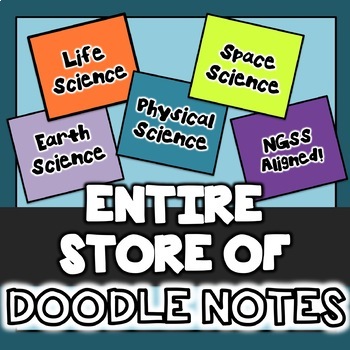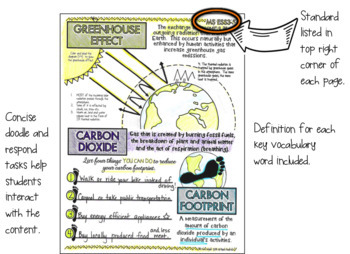Entire Science Doodle Notes Collection
- Zip
- Easel Activity

What educators are saying
Products in this Bundle (101)
showing 1-5 of 101 products
Description
This doodle note bundle includes a huge variety of middle school science notes. These doodle notes have been used in my classroom and so many others. They will engage your students and save you hours of time!
This product is listed at a 30% discount. Any new doodle note resources added to my TpT store will be automatically added to this bundle, and you will have access to them for free. If you have already purchased an item and would like to upgrade to the full doodle set bundle please contact TpT. TpT will refund prior purchases that were made within the last 365 days.
Includes 97 Products:
ALL Middle School NGSS Doodle Notes! (Life, Physical, Earth) 160 Doodle Notes Pages
5th Grade Science Vocabulary Doodle Note Set
Earth’s Spheres
Plant and Animal Cells
pH Scale
Phases of Matter
Light
Earth’s Layers
Cell Cycle and Mitosis
Microscope
Moon Phases
Characteristics of Living Things
Types of Volcanoes
Properties of Water
Density
Photosynthesis
Types of Energy
Waves
Scientific Variables
Heat Transfer
Food Chain
Symbiosis
Rock Cycle
Cell Theory
Speed
Punnett Squares
Matter
Weathering
Conductors and Insulators
Wind Erosion
Plus many other Doodle Tools and Downloads! (See list of Products in this Bundle above this description)
BONUS- Any new doodles I create will be added to this file purchase at no additional charge. You will also get doodle updates or additions to files as they are added at no charge.





